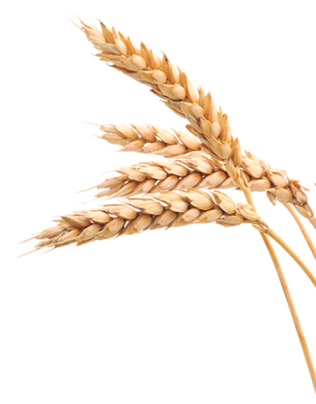Recently, you can see millstone flour on sale, and information about its benefits is increasingly heard. What is it: another marketing ploy to sell an expensive product, a tribute to fashion, or is it really a healthy product?
In order to understand this issue, you need to delve a little into biology and history.
We were told about the anatomical composition of the grain in biology lessons. It consists of a shell (in processed form it is bran), endosperm (mealy part of the grain) and the germ. Each part has its own functions and, in order to perform them effectively, the composition of trace elements and vitamins is different.
The germ has the highest nutritional value. It contains 4 times more vitamins and minerals than the rest. And also in the germ there are a lot of enzymes, fiber and everything that is necessary for the growth and development of grain.
The farinaceous part or endosperm is the energy in its purest form, necessary to support the process of grain growth.
The shell is designed to protect the grain from the effects of negative external conditions and its greatest value is that, once in the body, it works like a brush for the intestines, which cleanses it of poisons and mucus, improves peristalsis and promotes the absorption of nutrients.
At a time when our ancestors only learned to cultivate wheat and other cereals, they treated grain very carefully and tried to use it all in its entirety so that not a single part of it was lost. Over time, new technologies have appeared, thanks to which it was possible to obtain an impeccably white and pure powder without impurities. Such flour had excellent baking properties, but it turned out that there were no useful substances left in it.
The fact is that bran and germ are poorly ground and, in order to get the finest grinding, they began to get rid of them. Thus, the highest grade became popular, but useless, since it was made from a mealy part, in which there was practically nothing but starch and gluten.
Since then, flour has been distinguished by type (from which cereals it is produced), by grade (method and fineness of grinding) and by its purpose. For example, durum wheat is rarely used for baking, but is most often used to make pasta and pizza dough.
If we talk about the grade, then there is the highest, first, second, as well as peeled and >. The finer the grind and the whiter the powder, the higher the grade.
The name itself suggests that whole grain is used in production, just as our ancestors did. Only this fact already confirms that such flour is more beneficial for the body.
Millstone flour is, in fact, a way of processing cereals, in which millstones in the form of two large stones are used for grinding. This is the most environmentally friendly and natural way of processing, known since the very times when people learned to grow and use cereals for food.
Whole grain millstone flour can be not only wheat, but also rye, rice and any other depending on which cereal crop is being processed. It is used for baking bread, rolls, pancakes, muffins, and yeast-free whole grain bread is also prepared from it. At the same time, bakery products from it are not only tasty, but also healthy. In Ukraine, millstone flour can be bought from the manufacturer "August Kiy" under the brand name "August".

